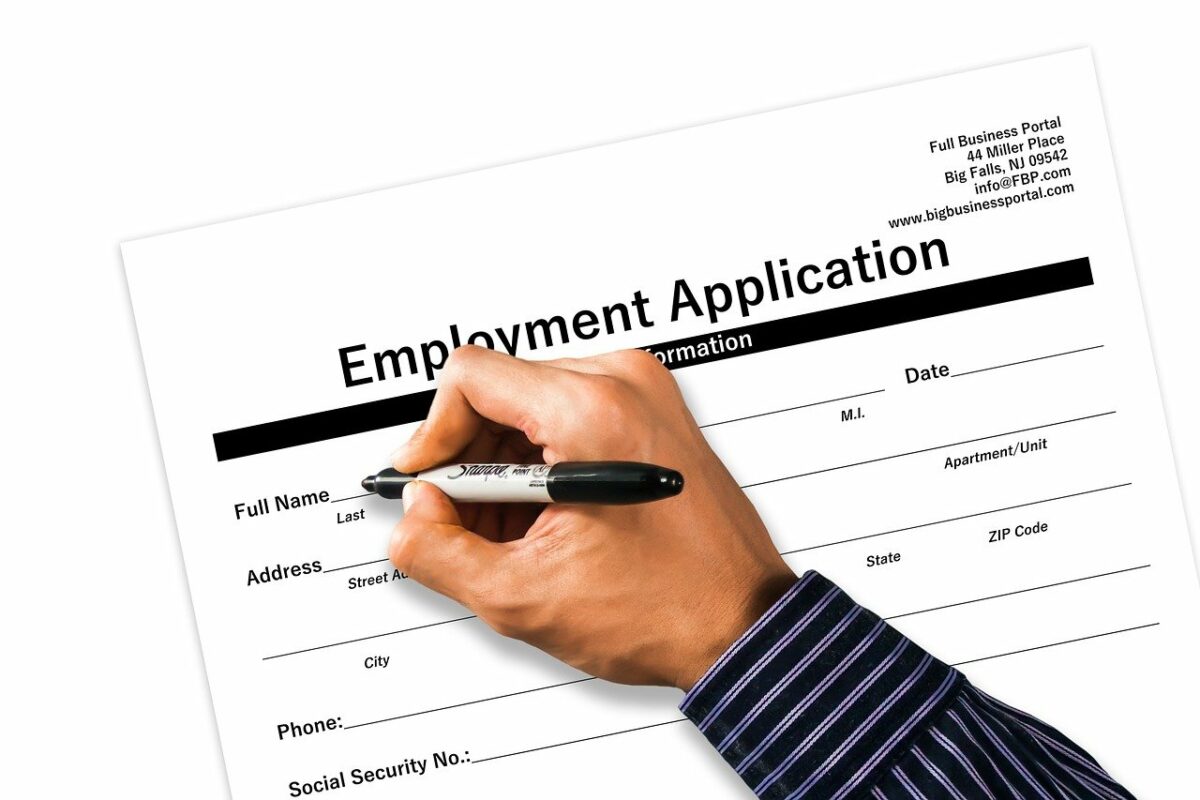How To Evaluate A Candidate’s Work Experience

Evaluating a candidate’s work experience is critical in ensuring you make the right hiring decisions. A thorough evaluation process helps identify the best fit for the role and contributes to a fair and transparent hiring process, leading to higher-quality hires and improved employee retention. Our blog will provide practical tips and resources for business owners, hiring managers, and HR professionals, covering essential aspects such as how to evaluate candidates effectively, assess candidate skills, and ensure their experience aligns with the job requirements.
Strategic and transparent candidate evaluation is vital for maintaining a fair hiring process and securing high-quality hires. Our focus will include detailed guidance on reviewing CVs and cover letters, understanding the role requirements, and using various assessment methods to ensure a comprehensive evaluation. For more in-depth information on crafting job descriptions that attract the right candidates, refer to our blog, What Work Experience To Ask For In A Job Description. Our guide, A Guide On How To Hire, offers extensive insights into the hiring process, from pre-screening to final selection.
By implementing the strategies and using the resources we provide, you, as a business owner, hiring manager, or HR professional, can enhance your recruitment process. This will ensure you attract and retain top talent who are the best fit for your organisation.
Highlights And Key Takeaways:
- The goal of candidate evaluation is to identify the best candidate who meets the job requirements and aligns well with the company’s culture and values.
- We highlight methods for evaluating candidates‘ skills, qualifications, achievements, role alignment, and track record.
- Crafting the perfect job description sets the stage for an effective and efficient hiring process, attracting a diverse pool of capable and qualified talent aligned with your culture and values.
Quick Links:
- Understanding The Role And Requirements
- What Is Candidate Evaluation?
- Reviewing The CV And Cover Letter
- Assessing Skills And Qualifications
- Evaluating Projects And Achievements
- Alignment To The Role On Offer
- Progression And Proven Track Record
- Ensuring A Fair And Transparent Process
- Evaluating Key Factors In Candidates
- Additional Recruitment Resources
- Hiring Process And Candidate Evaluation Process FAQs
Understanding The Role And Requirements
To evaluate candidates effectively, it is crucial to clearly understand the role on offer. This begins with defining the job requirements precisely, a topic extensively covered in our blog, What are Job Requirements?. Our resource serves as a solid foundation, guiding you in creating a well-defined job description and job advert, which are essential tools in the process of effective candidate evaluation and attracting suitable candidates.
A comprehensive job description outlines the skills, qualifications, and experience required for the position, ensuring your job ads are targeted and effective. For detailed guidance on crafting job descriptions, refer to our Job Description A – Z Guide: UK Job Description Writing Guide. Our resource offers extensive tips and best practices to help you write clear and concise job descriptions.
Moreover, involving your hiring team in defining the job requirements can ensure a thorough understanding of the role from multiple perspectives. To assist with this, we provide a job description library and a job description template that can streamline your efforts and ensure consistency across your recruitment materials.
By establishing a solid foundation with a well-defined role, job ads, and comprehensive job descriptions, you set the stage for a more effective candidate evaluation process. This, in turn, leads to better hiring decisions and successful placements.
What Is Candidate Evaluation?

The goal of candidate evaluation is clear: to identify the best candidate who meets the job requirements and aligns well with the company’s culture and values. This process assesses a candidate’s skills, qualifications, and work experience, helping to determine their suitability for an open role.
Multiple candidate assessment methods are used to evaluate a candidate’s suitability throughout the recruitment stages. Candidate evaluations can include:
- Interviews: Structured interviews help assess a candidate’s qualifications and fit for the role. Tools like our candidate scorecard template, detailed in our blog How To Shortlist Job Candidates, can standardise the screening and interview process and ensure objective evaluation.
- Work Sample Tests: These tests simulate job tasks to evaluate a candidate’s practical skills and problem-solving abilities.
- Reference Checks: Speaking with a candidate’s previous employers or colleagues provides insights into their past performance and reliability.
- Behavioural Assessments: These assessments predict future behaviour based on past experiences and actions.
- Personality Tests: These tests help determine if a candidate’s personality traits align with the role and company culture.
- Social Profile Reviews: Reviewing candidates’ online presence can offer additional context about their professional conduct and interests.
Emphasising fairness and transparency in the evaluation process is crucial. It ensures all candidates are given equal opportunities and that biases are minimised. Implementing structured methods like an interview scorecard ensures that each candidate is evaluated against the same criteria, promoting a fair hiring process.
By adopting a transparent and systematic approach to candidate evaluation, you can enhance the quality of your hires and foster a fair and inclusive recruitment environment.
Reviewing The CV And Cover Letter

Reading and interpreting a candidate’s CV and cover letter is a fundamental step in determining a candidate’s suitability for a role. Our blog, How To Evaluate CVs, offers comprehensive guidance. When reviewing these documents, it’s essential to focus on key areas such as job titles, responsibilities, and the duration of previous roles to ensure the candidate matches your requirements well.
Here are some tips for identifying relevant work experience and achievements:
- Job Titles: Look for job titles that match the candidate’s past roles and align with the role you are hiring for. Consider how the candidate’s previous positions directly relate to the responsibilities of the current job.
- Responsibilities: Evaluate the responsibilities listed under each role. This helps to understand the candidate’s day-to-day tasks and gauge their hands-on experience.
- Duration of Roles: Assess the time the candidate has spent in each position. Longer durations can indicate stability and a proven track record. However, frequent changes might require further exploration to understand the reasons behind them.
- Relevant Experience: Identify specific experiences directly relevant to the role on offer. This can include similar industries, projects, or tasks that match your job description. If you are hiring candidates from a similar industry, you may want to read How To Recruit Someone From A Competitor.
- Achievements: Look for quantifiable achievements demonstrating the candidate’s impact in their previous roles. Metrics such as increased sales, cost savings, or project completions provide concrete evidence of their capabilities.
By carefully examining these elements, you can better assess a candidate’s suitability for the position and make more informed hiring decisions.
Assessing Skills And Qualifications

Identifying essential and desirable skills for a role is crucial in evaluating a candidate’s suitability. Our blogs What Skills Are Needed For Different Jobs? and What Communication Skills To Include In A Job Description provide valuable insights into determining the specific skills required for various positions.
When reviewing a candidate’s CV, it is crucial to evaluate their hard and soft skills. A candidate’s soft skills, such as communication skills and problem-solving, are often the key to success in many roles. Our blog, How To Recruit People With Transferable Skills, is a valuable resource for identifying these skills that can be applied across different job functions.
When assessing a candidate’s skills, looking for practical examples and evidence of skills in action is essential. Specific achievements, projects, or tasks where the candidate demonstrated their capabilities, such as leading a project, resolving complex issues, or effectively communicating with a team, provide concrete proof of their proficiency.
“When assessing a candidate’s skills, look for practical examples and evidence of skills in action.”
Skills assessments, such as practical tests or simulations, are another effective way to gauge a candidate’s abilities. These tools allow you to evaluate specific skills and problem-solving skills in a controlled environment. They can help you objectively measure a candidate’s competencies and ensure they possess the critical soft skills necessary for the role.
By combining these evaluation methods, you can thoroughly assess a candidate’s skills and qualifications, ensuring they are well-equipped to meet the demands of the position.
Evaluating Projects And Achievements

Understanding the scope and impact of a candidate’s projects listed in their CV is not just a step in the hiring process but a crucial one. It helps identify the ideal candidate to match the role and meet your organisation’s needs. Discussing these projects and achievements during a job interview provides deeper insights into their capabilities and experience.
When assessing the relevance of a candidate’s projects to the current role, it’s important to consider how their past work aligns with your job requirements. Look for projects that involve similar tasks, responsibilities, and challenges. This alignment indicates that the candidate has practical experience that directly applies to your position.
Quantifiable achievements and evidence of success are strong indicators of a candidate’s effectiveness. Metrics such as increased revenue, cost reductions, or successful project completions provide concrete proof of their impact in previous roles.
Tips for discussing projects and achievements during interviews:
- Ask for Specific Examples: Request the candidate to describe specific projects they have worked on, detailing their role and contributions.
- Focus on Outcomes: Inquire about the projects’ results, looking for quantifiable outcomes demonstrating success.
- Understand Challenges: Ask the candidate to discuss any challenges they faced and how they overcame them, highlighting their problem-solving skills.
- Relate to the Role: Encourage the candidate to explain how their previous projects and achievements prepare them for the new role’s responsibilities.
For more comprehensive guidance on how to interview candidates, visit our Interview Resource Hub, which offers a wealth of tools and resources to help you craft insightful interview questions and make informed hiring decisions.
By thoroughly evaluating a candidate’s projects and achievements, you can better understand their practical experience and suitability for the role, ensuring you select the best candidate for your company.
Alignment To The Role On Offer

Ensuring a candidate’s experience aligns with the job description is fundamental in identifying qualified candidates. To assess candidate skills effectively, it’s important to thoroughly review their past roles and responsibilities, ensuring they match the key requirements of your position.
Identifying transferable skills is a crucial part of the evaluation process. These skills, which can be applied across different roles and industries, often indicate a candidate’s adaptability and potential. Look for evidence in the candidate’s CV and cover letter highlighting their ability to adapt these skills to your needs.
“You can use your job descriptions to ensure candidates align with your company and culture and values before they even enter the application pipeline.”
Another vital aspect of the evaluation process is assessing cultural fit and alignment with company values. A candidate’s ability to integrate into your company’s culture can significantly impact their success and satisfaction. You can use your job descriptions to ensure candidates align with your company and culture and values before they even enter the application pipeline. For more information on this, refer to our blog, How To Infuse Company Culture And Brand Values Into Your Job Descriptions.
Focusing on these elements can ensure that you are assessing the candidate’s skills and experience as well as their potential to thrive within your organisational environment. This holistic approach will help you identify the most suitable candidates who are qualified and a good culture fit, leading to better hiring outcomes.
Progression And Proven Track Record

Evaluating a candidate’s career progression and growth within previous roles is essential in identifying the best talent. A steady progression indicates a potential candidate’s ability to take on increasing responsibilities and succeed in more challenging roles. This upward trajectory is a good indicator of their commitment and capability.
A proven track record in similar roles or industries is invaluable. It demonstrates that the candidate has successfully applied their skills and knowledge in relevant contexts, making them a safer bet for your organisation. Reviewing their achievements, work samples, and specific contributions can provide insights into their reliability and effectiveness.
“An upward career trajectory is a good indicator of a candidate’s commitment and capability.”
Spotting signs of potential and future growth is crucial, especially when considering candidates with less experience. Look for indicators such as proactive learning, taking on additional responsibilities, or innovative problem-solving. These traits suggest the candidate has the drive and capacity to develop further, making them a strong long-term investment for your team.
Focusing on career progression, proven track records, and potential growth can help you better identify and evaluate the best talent, ensuring your hires are well-equipped to contribute to your organisation’s success.
Ensuring A Fair And Transparent Process

Ensuring a fair and transparent hiring process is crucial for attracting and retaining top talent while fostering an inclusive workplace. Here are four key steps to achieving a fair and transparent hiring process:
- Setting Up Evaluation Standards and Diversity Mandates: Establish clear evaluation standards that apply uniformly to all candidates. This includes defining the criteria for skills, experience, and cultural fit. Additionally, implement diversity mandates to ensure a wide range of candidates are considered, promoting a diverse and inclusive workforce. You can also tackle this issue earlier on in the recruitment process by infusing a diversity and inclusivity statement in your job descriptions. Read more on this in our blog, How Do You Write An Inclusive Job Description?
- Using Structured Interviews and Scorecards for Objective Assessment: Structured interviews help standardise the evaluation process, ensuring each candidate is assessed based on the same criteria. Using scorecards allows for objectively comparing candidates’ responses, reducing bias and subjectivity. This method ensures that all candidates are given equal consideration.
- Implementing Quantitative Testing and Collaborative Hiring Approaches: Quantitative testing, such as skills assessments and work samples, provides measurable data on candidates’ abilities. These tests can highlight a candidate’s strengths and potential objectively. Adopting a collaborative hiring approach, where multiple team members are involved in decision-making, further ensures fairness. This method leverages diverse perspectives and reduces the risk of individual biases affecting the outcome.
- Importance of Transparency and Communication Throughout the Hiring Process: Maintaining transparency and open communication with candidates is vital. Clearly outline the stages of the hiring process and what candidates can expect, and provide timely updates. This transparency builds trust and ensures candidates feel valued and respected. Effective communication also includes providing constructive feedback to candidates, enhancing their experience and leaving a positive impression of your organisation.
You can create a fair and efficient hiring process by setting up robust evaluation standards, using structured methods, and ensuring transparency. This approach helps identify the best candidates and reinforces your organisation’s commitment to fairness and inclusivity.
Evaluating Key Factors In Candidates

So, let’s recap evaluating the key factors in candidates to ensure a thorough and effective hiring process. Here are five critical areas to focus on when assessing candidate skills:
- Experience: Relevant experience is crucial as it significantly impacts onboarding and productivity. Candidates with the right background can quickly adapt to the role and contribute effectively from the start. Their familiarity with similar tasks and environments reduces the learning curve and enhances their performance.
- Potential: While experience is important, potential candidates with high potential should not be overlooked. Assessing candidates who demonstrate strong capabilities, leadership qualities, and a willingness to learn can be valuable, even with limited experience. These individuals often bring fresh perspectives and a high level of enthusiasm to the role.
- Hard Skills: Technical skills and qualifications are vital, especially for roles that require specific expertise. Evaluating these skills is essential to ensure the candidate can perform the job effectively. Our blog, How To Recruit Candidates For Technical Jobs, provides insights into identifying and assessing the technical competencies required for such positions.
- Soft Skills: Evaluating essential soft skills is equally important for success in the role. Skills such as communication, teamwork, and problem-solving are critical in ensuring a candidate can collaborate effectively and handle challenges. These skills often distinguish great candidates from good ones.
- Cultural Fit: Ensuring the candidate fits into the company or team culture is key to their long-term success and satisfaction. A good cultural fit enhances employee engagement and retention, as individuals who align with the company’s values and work environment are more likely to thrive.
Focusing on these factors allows you to evaluate potential candidates comprehensively, ensuring they possess the necessary experience, skills, and cultural alignment to succeed in your business. This thorough approach will enhance your overall hiring process, leading to better hiring decisions and improved organisational performance.
Additional Recruitment Resources
Finding the ideal candidate requires more than just a good interview process; it involves using the right resources and staying updated with the latest recruitment trends. Here are some additional resources to help you enhance your hiring process and ensure you identify top talent effectively.
Crafting the perfect job description is the first step in attracting the right job seekers. Our Job Description Library offers samples tailored to various roles, helping you create clear and compelling job descriptions. Use our Job Advert Templateto design engaging job ads that stand out. Additionally, our Job Description Template provides a structured format to cover all necessary details, making it easier for candidates to understand the role and its requirements.
For the latest insights and trends in recruitment, be sure to check out our recruitment blog. It’s packed with valuable information on best practices, industry news, and innovative hiring strategies. Staying informed will help refine your recruitment process and keep you ahead of the competition.
We offer several detailed guides to support your hiring efforts:
- A Guide On How To Hire: This comprehensive guide covers every aspect of the hiring process, from defining job requirements to making the final decision.
- Plan, Practice, And Perfect Your Questioning Techniques: Learn how to craft and refine your interview questions to effectively assess a candidate’s performance and suitability for the role.
Using these resources will streamline your recruitment process and ensure you attract and identify the ideal candidates for your business. Stay proactive and use these tools to enhance your hiring outcomes and build a strong, capable team.
Hiring Process And Candidate Evaluation Process FAQs
Next, we tackle the questions of business owners, Hiring Managers, and hiring team professionals on assessing candidate skills through their work experience:
Evaluating work experience involves assessing the relevance, depth, and impact of a candidate’s previous roles to the position you’re hiring for. Start by examining the candidate’s job titles, responsibilities, and achievements to understand the scope of their past work. Look for evidence of progression and growth, such as promotions or expanded responsibilities, which indicate a track record of success. Additionally, consider the context of their experience, such as the size and type of previous employers, and how these factors might align with your organisation’s needs. Finally, corroborate their claims with references to ensure accuracy and gain further insights.
Evaluating candidates’ skills and qualifications requires reviewing their educational background, professional certifications, and practical experience. Begin by verifying their academic credentials and any relevant certifications to ensure they meet the role’s basic requirements. Next, assess their technical and soft skills through structured interviews, practical tests, or simulations tailored to the job’s key competencies. Please pay close attention to examples from their previous work demonstrating their proficiency and problem-solving abilities. Additionally, consider using assessments or psychometric tests to better understand their capabilities and fit for the role.
Ensuring a good candidate experience starts with clear, timely, and transparent communication throughout the hiring process. Provide candidates with detailed information about the role, the company, and the recruitment timeline. Maintain regular updates and be responsive to their queries to keep them engaged. Conduct interviews in a professional yet welcoming manner, ensuring candidates feel respected and valued. However, it’s not just about respect; it’s about support. Offering constructive feedback, regardless of the outcome, is a way to support candidates and encourage their growth. Lastly, streamline your application and interview processes to minimise unnecessary delays and ensure candidates have a smooth and efficient experience.
Evaluating candidate experience involves reviewing their interactions with your company during recruitment. Start by gathering feedback from candidates at various stages through surveys or follow-up calls. Analyse their responses to identify strengths and areas for improvement in your hiring process. It’s also crucial to track metrics such as application drop-off rates, time-to-hire, and candidate satisfaction scores to objectively gauge overall performance. Look for patterns in the feedback to understand common pain points and successes. Review and refine your processes based on these insights and metrics to continually enhance the candidate experience and attract top talent.



